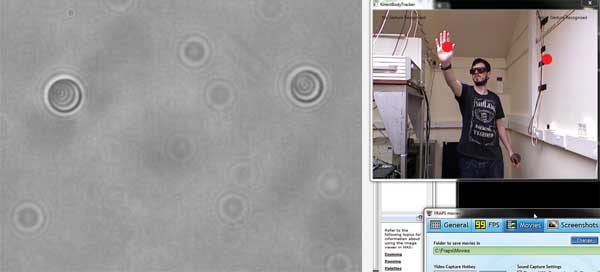They’ve both been around since the ’70s, but they never got together until now. We’re talking about video game consoles and optical tweezers, and a new system that brings the two together – with a very modern twist.
Through the system, called HoloHands, scientists can use the motion sensor in Microsoft Xbox Kinect’s video game platform to control holographic optical tweezers, allowing them to trap, move and rotate microscopic particles simply by waving a hand. That’s important, as finding a control interface for optical tweezers has long proved problematic. And it’s fun, too.
“We have a lot of video game enthusiasts here, and we came to the conclusion that Kinect had the potential to allow us to build a very natural and intuitive interface that would appeal to a wide range of potential users,” said David McGloin, who created HoloHands with colleagues at the University of Dundee in the UK. “We’re always open to new ways of working, and keeping an open mind about these things is essential in science. This shows how technology that at first seems as far removed from the academic lab as it’s possible to be can actually be of great benefit to us.”

HoloHands allows users to control a laser tweezer system using the Xbox Kinect motion sensing input device. With the program, researchers can manipulate microscale particles seen on a computer screen using hand and arm movements. Courtesy of David McGloin and Craig McDonald, University of Dundee, UK.
The researchers tested HoloHands by moving silica microspheres using a standard infrared holographic laser system, which consists of a camera, an infrared laser for distance measurement, and a microchip that interprets the measurement data to track particles in three dimensions.
The program isn’t ready for serious research yet. Its developers still have to overcome the time lags and body-movement misinterpretations that Kinect users experience all the time. But it could help to introduce trapping concepts in educational settings, for example.
“There is great potential as a teaching aid that could show a new generation of students the potential of optical tweezers,” McGloin said. “Optical tweezers and beam manipulation technologies are increasingly found in undergraduate teaching laboratories. The use of a Kinect offers a fairly low-cost interface to control high-tech equipment and allow interdisciplinary skills to be developed.”
For a glimpse of the process in action, watch “HoloHands: Kinect Control of Holographic Optical Tweezers”
at http://youtu.be/I2iU90EiEis.